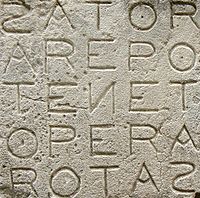neufer wrote:
All three of the right triangle objects are overexposed 11th magnitude stars in our own galaxy:
1) TYC 2856-1642-1: Mag. 11.079
2) HD 275047: Mag. 11.227
3) TYC 2856-560-1: Mag. 11.331
TYC 2856 1642 has a VT magnitude of 11.102 ± 0.072 and a B-V index of +0.233 ± 0.01. Its parallax, as measured by Tycho, is -19 ± 43 milliarcseconds. Since negative parallaxes don't exist, this measurement is clearly not correct, but it definitely suggests that the star is not nearby. Compare it with Proxima Centauri, which is the most nearby of all stars except the Sun. The VT magnitude of Proxima Centauri is 11.01 and its parallax is +772 ± 2.42 milliarcseconds, which corresponds to a distance of 4.223 ± 0.013 light-years. The B-V index of Proxima is +1.807 ± 0.020. The spectral class of Proxima is M5V and its luminosity is 0.00005500 ± 0.00000034 times that of the Sun.
Compared with Proxima, we can see that TYC 2856 1642 is about the same apparent magnitude, but because of its tiny parallax we can be sure that it is vastly farther away than four light-years. Therefore it is much, much brighter than Proxima. In fact, because the star is a lot bluer than the Sun while at the same time it is quite far away and still as bright as eleventh magnitude, we can be sure that the star is both hotter and brighter than the Sun. Its color corresponds to a main sequence star of spectral class A7 like famous and nearby Altair, alpha star of the constellation of Aquila, whose parallax of +194.44 ± 0.94 milliarcseconds corresponds to a distance of 16.774 ± 0.081 light-years, and whose luminosity is 10.93 ± 0.11 times that of the Sun.
TYC 2856 1642 is clearly a lot farther away than Altair. That suggests that its intrinsic color may well be bluer than +0.233 ± 0.01, because it is quite likely that the star is noticably reddened by intervening dust. That in turn suggests that TYC 2856 1642 is hotter and therefore almost certainly brighter than Altair. We don't know how reddened TYC 2856 1642 is, but we can say with considerable certainty that the minimum brightness of this star is about 11 times that of the Sun, like Altair, and we can say with even greater certainty that its minimum temperature is 7550 Kelvin, also like Altair.
As for the two other stars, TYC 2856 560 has a B-V index of +0.689 ± 0.136. This corresponds to a temperature very much like the temperature of the Sun, which is 5800 Kelvin, resulting in a B-V index of 0.656±0.005. TYC 2856 560 may be similar to the Sun, but if it is reddened by intervening dust it may well be intrinsically hotter and brighter than our own star. No parallax is given for TYC 2856 560.
As for HD 275047, it too has a "false negative" parallax, and it too is probably quite far away. Its B-V index, +0.031 ± 0.085, corresponds to an early A-type star, not unlike Sirius. Sirius is 21.79 ± 0.18 times brighter than the Sun, and we can be reasonably certain that HD 275047 is at least as bright as that. But HD 275047 could be reddened by dust due to its possibly great distance from us, in which case it might be considerbly hotter and brighter than Sirius.
All in all, I'd say that at least two of the three bright stars in today's APOD are really intrinsically blue. The third one might be either intrinsically blue or intrinsically white, like the Sun.
Ann
 The Perseus Cluster of Galaxies
The Perseus Cluster of Galaxies







